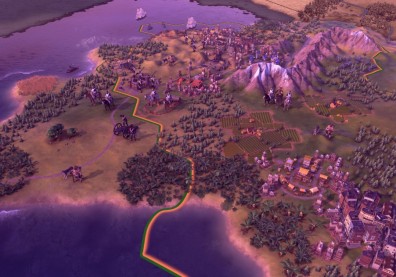"Civilization 6" is set to come out in September of this year, and it's making huge waves ever since it was announced a couple of months back--namely for the literal game-changing overhauls its very basic mechanics are getting.
We already know that "Civilization 6" is totally changing the way players manage cities, as for the first time in the franchise's history, it's no longer going to be a static playing approach where your cities have to keep producing as many buildings as it can. One of the first big reveals about the game was that cities would now have to use up adjacent tiles in order to build structures and other improvements.
Ed Beach delves further into the new "Civilization 6" system in his interview with GameReactor. Beach states that aside from placing subtle limits on what infrastructure could be produced by forcing players to take up adjacent tiles, these can be taken advantage of with smart planning thanks to adjacency bonuses, which players first saw in "Civilization 5."
For example, certain wonders could only be built if the city was next to a specific tile, like the Petra only being open to cities beside deserts. There is also the Incan Terrace Farm, which provides a bigger Food bonus if it's placed beside a mountain tile. In "Civilization 6," they have to micromanage even more and sacrifice certain improvements for others, depending on what they need.
The other bit of big news is the return of the government systems mechanic from "Civilization 4" and older games, which "Civilization 5" replaced with policies. No further details were shared about government systems, but players worried about losing the beloved flexibility provided by individual policies can rest assured knowing that government systems, like in the previous games, can be changed easily for whatever purpose in "Civilization 6."
"Civilization 6" is due to drop on October 21, 2016.









